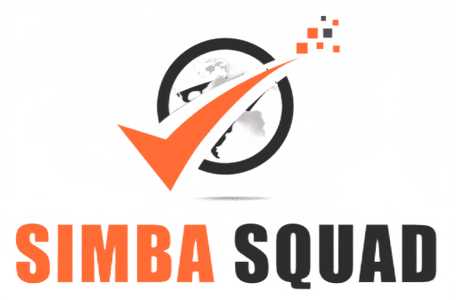The presented optimization is based on the Yoast SEO plugin. It contains various tips on what to focus on when posting. The plugin also shows us what we still need to do.
Of course, this is not the only such plugin. There are many other tools that work on a similar principle. Although the aspects of this one plug-in will be described here, you can still take advantage of the advice, even if you use other tools. You will learn, above all, what is most important here and what to look for using this type of plugin.
Before we get to specific tips, we should first install the presented plug-in. As with other add-ons, we do it from the WordPress cockpit level. Once the plugin has been installed, we will see the WordPress Yoast SEO window in the entry view (under the text editing section). However, if the window does not appear, we have to activate it manually – at the top of the screen, there is a “Screen Options” button, where we select the “Yoast SEO” option.
When we already have the plug-in installed, we can start work. It is not as difficult as it seems.
Key phrases
We should start positioning with the key phrase. Then the plugin processes the content of the article we write and then presents the results in the form of colored dots. They resemble traffic lights. If our article corresponds to the phrase chosen and is well-written from the point of view of SEO, the dots will be green. However, if we need to improve something, the plug will let us know it in the form of red dots. For example, it will pay attention to a too-short text or miss a key phrase in the first paragraph. At this stage, first of all, we should remember that a given phrase should be used only once. Otherwise, the same articles will compete for the position, which we definitely want to avoid. As far as the parameter is no longer relevant and in most pages it is not implemented, the same keywords should be in the relevant sections of our site. To do this you can use such plugins as All in One SEO Pack or Yoast. Optimization plugins are much more, but these two are most often used to optimize websites based on WordPress.
Meta description, title, URL
Meta description, or the description of the website displayed in the search results, can be entered in two ways. When you press the “Edit snippet” button, choose “Description” from all available options. Then we can enter the content. Remember to use all the possible space. As you fill up the content, the green bar will fill up. The second important issue is to use the description to advertise the page. Do not let this be an illogical combination of keywords and a valuable description that will encourage others to visit our site.
Another way to enter a description is the teaser field. Of course, we can use it if the teaser is present in our current WordPress theme.
Once we have the description, let’s focus on the title – the SEO title. Usually, the character limit in the title is 50 or 60. I do not think there is a need to explain that the title should primarily encourage and intrigue so that people are more likely to enter our website. And what’s important, it must also contain a keyword. Like the description, you can enter the title in two ways – in the field given above or under the title of the WordPress cockpit entry. Of course, it is better to use the second method because it is effective for positioning a WordPress SEO and not only in the search results (as the first way) but also as the title of the article on the page.
The last issue in this topic is the name of the link. The place to enter it is in the “Slug” field of the Yoast plugin. The length (50-70 characters) is also important here, but also – which is just as important – easy to read for readers. First of all, the name should not contain special characters and numbers and can be the same as the title.
The most important thing, meaning the content
We’ve already talked about descriptions, titles, and links, so let’s get to the most important one, meaning the content itself. The plug-in used by us also focuses on the density of the phrase in relation to the whole content. Usually, it should be from 0.5% to 1%. Let’s also remember that our text should not be overloaded with a phrase – otherwise we can encounter unpleasant consequences on the part of Google.
The Yoast SEO plugin also gives you the option of optimizing content for a few phrases, but it is a paid option. If we want to check the density of another phrase, it is enough to enter it in the required field.
The key phrase chosen by us should be included in the first paragraph so that potential users would immediately know what text they are dealing with.
Another important thing is the use of headings: H1, H2, etc. First of all, this affects the readability of the text and helps to strengthen the positioning of the phrase. Sometimes it also determines whether the user decides to read the entry. People like to know what the text is about before they even read it. This solution allows them to scan all content. Importantly, the H1 header should be on the page only once, and the rest must be ordered to form a coherent whole. The headings should be arranged as in the case of creating a table of contents in the book – first chapters, then sub-chapters, etc.
- An example of a bad header scheme: H2 -> H1 -> H4 -> H3 -> H5 -> H6
- Correctly arranged headings: H1 -> H2 -> H3 -> H3 -> H2 -> H3 -> H4 -> H4
Linking is also welcome from the point of view of WordPress SEO. This is not only about internal links, but also external links.
Due to the fact that texts enriched with graphics by the majority of users are better perceived, we should also take care of this issue. On this occasion, let’s remember about the ALT attribute, which is an alternative description of graphics, thanks to which Google can scan images. It is also worth optimizing the weight of the image and its dimensions. “Heavier” graphics can affect a slower page load.
Other WordPress plugins that you should know
In addition to the basic Yoast SEO plugin, there are many more that will help to ensure the SEO of our blog. One of them is SEO Auto Linker. First and foremost, she is responsible for linking words in the content, i.e. anchor text. It is useful in both internal and external linking. In the beginning, we give the phrases to be linked and give the URL to which you want to link. The plugin also allows you to specify the maximum number of outgoing links and allows for additional settings, e.g. opening links in a new or current window, setting parameters, etc.
Another plugin, responsible for outbound links is the Broken Link Checker. First of all, it checks if each outbound link works. We can set up notifications for mail about broken links and decide how often links should be checked.
The 404 Redirected plug-in also works in a similar way, which not only detects inactive links but also automatically redirects to another, working page.
An interesting plug-in is also AutoSave Remote Images. This plugin automatically sets the entry icon. You do not need to configure the plugin, all you need to do is install it. This is especially useful for blogs using templates that also display icons on the home page in the list of entries.
A useful plugin is also WP-Post Ratings or the rating system of entries. This has a positive impact on the increase in the CTR (clickthrough rate).
We are the No.1 SEO company in Ahmedabad specializing in WordPress SEO since the beginning of its many years of activity. We are gradually helping our clients to reach a wider audience. We offer effective internet advertising tools and a wide range of services, including effective campaigning on social networks like Facebook, and Pinterest. In addition, we can also undertake to run a professional, generating sales blog – all in a subtle and not looking obvious advertising.
Useful Tips & Advice to beat the competition can be found in our article ” Effective SEO Strategies For Small Businesses”






